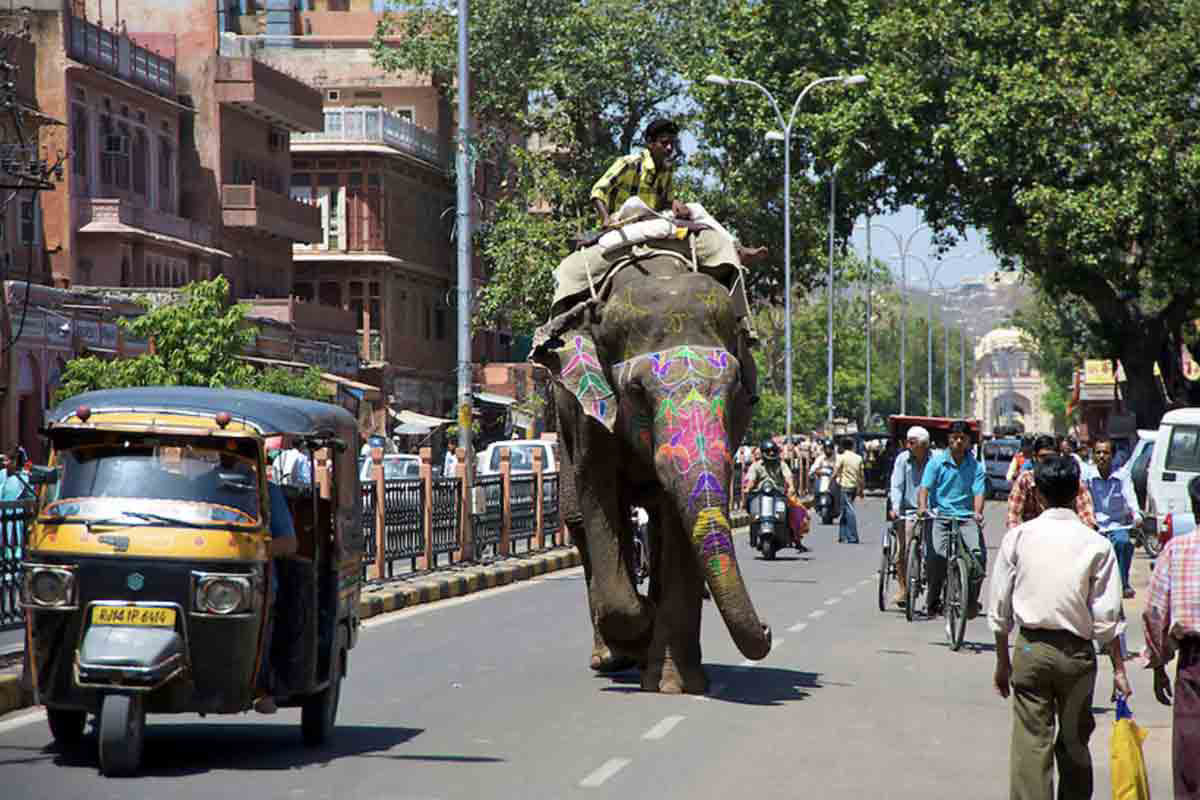Steering India's public transport system towards sustainability
Road transportation is one of the most visible and fastest-growing sources of air pollution or carbon emissions.
India carries many tags. It is the world’s fastest-growing major economy and its most populous country. If and when such a substantial country turns net zero in carbon emissions—by 2070, as per its commitment to combat climate change—the impact on the planet will be significant.
Road transportation is not India's largest source of air pollution or carbon emissions, yet it is the top-of-mind factor when discussing either of these issues. The reason is likely its high visibility—nearly 300 million registered vehicles in India—and relatability since we all use some form of polluting transport.
Be that as it may, pollution from road transportation in India does account for around 12% of the country's CO2 emissions, according to a Niti Aayog report, making it an important enough target in the net zero ambition. Moreover, this is an average pan-India figure, and the proportion would logically be higher in large cities. Left unchecked, its contribution could double by 2050, according to the above report, given the pace at which vehicles are being added to India’s roads.
This is not to say that there has been no progress. There have been rapid strides made in electrification, especially in public transportation. Besides this, fuel economy has also seen much improvement, going from 6.9 litres of gasoline-equivalent (lge) per 100 km in 2005 to 5.7 lge/100 km in 2019, around 20% below the global average in 2019, as per IEA data. These positives notwithstanding, absent any radical and rapid change in transportation technology, public transportation management remains the key to reducing emissions by giving commuters a better, greener mode of daily transport. One of the most rapidly growing categories of cars in cities has been on-demand cabs operated by ride-hailing platforms. By Uber India’s own admission, in 2023, Uber trips covered 6.8 billion kilometres, “which is enough to traverse the entire 6.37-million-kilometre road network in India more than a thousand times over, or nearly thrice every day”. Ola Cabs—the other significant ride-hailing platform—is even larger than Uber by most accounts, and then there are several smaller national-level and regional players, which makes this category of vehicles a significant part of the 12% GHG contribution from transportation. What’s worrying is that the demand is almost insatiable, with the sector likely to remain supply constrained for some time to come.
Shifting users from these services to pooled transportation, such as shuttle services, would be a big win. In their research, Choi et al. find that shared modes can have the highest value of time savings This is because ride-hailing vehicles generate up to 40%–50% more greenhouse gas emissions than private vehicles due to the large number of deadhead miles travelled, which is the distance covered to pick up a passenger or cruise the streets while waiting for a ride request. The benefits are simple enough to understand: if four riders were to occupy each shuttle vehicle instead of one, the average emissions per person or per kilometre would fall substantially even after accounting for more stops and starts and some distances being covered at less than 100% occupancy.
Governments have followed a carrot-and-sticks approach to the problem of emissions from transportation, which has not yielded much. Congestion surcharges are meant to deter vehicles entering congested parts of the city but their benefit are not clear cut, as per Feldman et. al. In incentives, generous subsidies have been provided to cities for expanding electric bus fleets, the next vital step is getting people to shift from private vehicles to on-demand transportation options. However, this still leaves a sizeable population of on-demand cab users who prefer private transport's comfort, privacy, and flexibility.
Any solution thus requires a shift through behavioural change, which can be encouraged by reducing user friction and discomfort. This, in turn, requires improving the service features of pooled transport, which has emerged as a cheaper and more environmentally friendly alternative to on-demand private transportation services.
It is thus worthwhile to understand customer preferences in choosing between private and pooled transportation services and investigate how policies can be designed to incentivise customers to use pooled transportation. This would effectively reduce the number of ride-hailing vehicles and, as a result, GHG emissions and traffic congestion.
Rider preferences
If we consider shuttle services the preferred alternative, understanding riders’ value of time, detour, and walking distance to and from shuttle stops is the first step in identifying and designing effective green transport policies. Researchers from the Indian School of Business, Imperial College London, and Cornell University set out to do precisely this for their study on ‘Private vs. Pooled Transportation: Customer Preference and Design of Green Transport Policy’.
These researchers' estimation results show that riders most value the commute as a feature of the shuttle service. To this end, additional stops were analysed on shuttle routes to see if this would reduce the number of on-demand cabs in a specific representative route in Delhi. The conclusions are substantial.
A 20% reduction in walking distance for shuttles—by adding more stops along the route—leads to a 1.4-1.5% decrease in on-road vehicles due to the substitution between the shuttle and on-demand cab services. This reduction in walking distance can achieve 40% of the benefits of congestion surcharge policies, which are resented, ineffective, and require strict administering. According to Kashish Arora, Assistant Professor of Operations Management at the Indian School of Business, “We find that the monetary cost of walking one minute to the shuttle stop is Rs 8.5 on average, which is 30% higher than the monetary cost associated with one minute of detour when travelling via a shuttle service. This result suggests that investing in reducing the walking distance to shuttle stops can be an effective policy to promote shuttle ridership”.
Compared with penal measures such as congestion surcharges, improving the pooled ride service features via efforts like reducing the commute can be an effective strategy for local governments to promote the usage of pooled transportation and reduce the number of ride-hailing vehicles on the road. Additionally, given that the location of the shuttle stops can be shown on an app, and no physical infrastructure is needed, adding stops is essentially costless for any platform that runs such shuttle services.
References
- https:// https://economictimes.indiatimes.com/industry/auto/two-wheelers-three-wheelers/over-21-crore-two-wheelers-7-crore-four-wheelers-and-above-category-of-vehicles-registered-in-india/articleshow/93351004.cms?from=mdr
- https://www.mdpi.com/2304-8158/13/6/966
- https://www.intelligenttransport.com/transport-articles/159602/india-transition-sustainable-public-transport/
- https://www.iea.org/articles/fuel-economy-in-india
- https://www.iea.org/reports/global-fuel-economy-initiative-2021
- https://www.researchgate.net/publication/367060705_Value_of_travel_time_savings_of_autonomous_vehicle_commuters_a_segmented_valuation_for_local_and_inter-city_travel
- https://doi.org/10.1287/msom.2022.0569
- https://iea.blob.core.windows.net/assets/9635288b-5794-40e3-9898-d685aa8ad315/TransitioningIndiasRoadTransportSector.pdf
- https://www.uber.com/en-IN/newsroom/how-india-ubered-in-2023-a-year-in-rear-view/
- https://economictimes.indiatimes.com/tech/technology/not-enough-vehicles-on-ride-hailing-platforms-to-meet-growing-demand-says-uber-india-president/articleshow/113200443.cms?from=mdr
- https://www.latimes.com/environment/story/2020-03-07/uber-lyft-ride-hailing-air-pollution-greenhouse-gas-emissions



